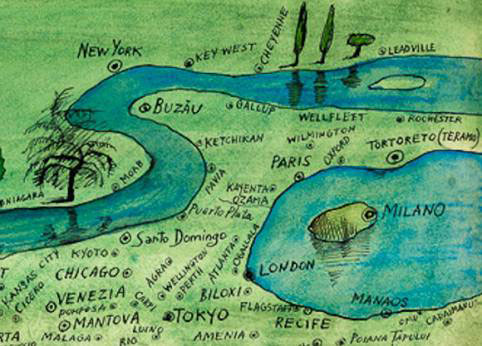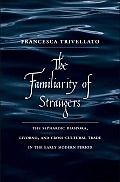ABSTRACT
The case of Stephen S. Wise provides a lens through which to examine American Jewry’s transformation at the dawn of the 20th century. Not only were New York City and Portland, Oregon – places Wise called home – two geographic poles of America’s urban frontier, they also highlight a spectrum of possibilities available to the New World’s fledgling Jewish community. Viewed in tandem, they illustrate American society’s raw, open, and pliable terrain as it emerged from a rural pre-industrial past. Moreover, by placing Wise in the context of the metropolitan growth that reshaped the Atlantic and Pacific frontiers in the late 19th century, we gain a better understanding of the relationship between the country’s dynamic environmental conditions and the phenomenon of Jewish immigrant absorption, acculturation, and Americanization.
In withdrawing to the wilderness, Wise exposed himself to new possibilities for thinking about the place of Jews in American society and the future of American Judaism. He also honed the role of which he was to become a superlative exemplar – a 20th-century American rabbi at home in the worlds of religion and politics. Furthermore, his synthesis of liberal Judaism, American pluralism, Zionism, and Progressive-era notions of social justice anticipated the rise of a new American Jewish sensibility that would become normative in the 20th century.The case of Stephen S. Wise provides a lens through which to examine American Jewry’s transformation at the dawn of the 20th century. Not only were New York City and Portland, Oregon – places Wise called home – two geographic poles of America’s urban frontier, they also highlight a spectrum of possibilities available to the New World’s fledgling Jewish community. Viewed in tandem, they illustrate American society’s raw, open, and pliable terrain as it emerged from a rural pre-industrial past. Moreover, by placing Wise in the context of the metropolitan growth that reshaped the Atlantic and Pacific frontiers in the late 19th century, we gain a better understanding of the relationship between the country’s dynamic environmental conditions and the phenomenon of Jewish immigrant absorption, acculturation, and Americanization.
In withdrawing to the wilderness, Wise exposed himself to new possibilities for thinking about the place of Jews in American society and the future of American Judaism. He also honed the role of which he was to become a superlative exemplar – a 20th-century American rabbi at home in the worlds of religion and politics. Furthermore, his synthesis of liberal Judaism, American pluralism, Zionism, and Progressive-era notions of social justice anticipated the rise of a new American Jewish sensibility that would become normative in the 20th century.1
Issue ID: 02
October 2011
ABSTRACT
Although throughout the middle-ages Jews used to live in urban environment more than non-Jews, urbanization process in the 19th century was as critical to Jewish modern history as in other cases. Modernization, in all aspects, had a deep impact on Jewish demography, socio-economic life and self understanding. On the same time Jews were immigrating by the millions to the “new world” (mainly to the United States), a small current of Jews was heading to Palestine (Eretz Israel if to use their specific term). As opposed to a common understanding of Zionism, the future city and the neo-urbanization of the Jews – and not only the new villages (Moshavot, Kibbutzim, Moshavim) – was a main Zionist goal. This article describes one of the first comprehensive observations of these issues, as seen from the eyes of Louis Miller, himself a Jewish immigrant that settled in the outmost city of the modern world: New York. In 1911 he paid a visit to the one-year-old Tel Aviv, and managed to see in this new modest garden-city the cradle of the Zionist revolution. Not less important: Miller understood as early as 1911, the crucial role Jewish settlements in Palestine would have in the crystallization of modern Jewish peoplehood. Tel Aviv took major part in this development. It still does.
Reapproaching Borders
New Perspectives on the Study of Israel-Palestine
ABSTRACT
By using the case study of Minsk – a historic Jewish center in pre-revolutionary Russia, and capital of the Belorussian Soviet Socialist Republic after 1917 – this article explores the Sovietization and modernization of Jewish women in an urban setting of the former Pale of Settlement during the 1920s. The study of a “Jewish metropolis” like Minsk, situated in the heart of the pre-1917 territory of designated Jewish residence, provides a better insight into the ways in which most Jewish women adjusted to the Bolshevik rise to power, negotiated between Communism and Jewish identity, and integrated into Soviet society. By focusing in particular on the Minsk branch of the Women’s Department of the Communist Party (Zhenotdel), this article reveals the evolution of the gender discourse on the Jewish street, the changing roles of Jewish women in the new revolutionary society, as well as the challenges they faced when attempting to modernize according to Bolshevik guidelines.


